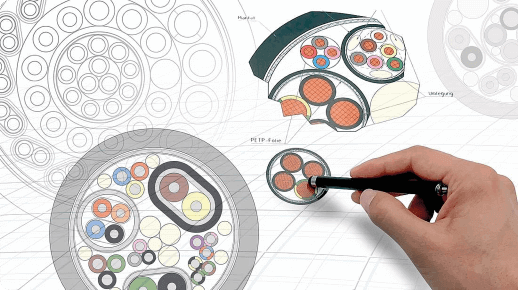The conductor of electric vehicle charging cables should be type 5 or type 6 metal-plated or non-metal-plated annealed copper conductor in accordance with GB/T 3956-2008. The signal or control wire core conductor is allowed to be reinforced with appropriate materials.
Power line core: It is composed of multiple strands of soft copper wires and is covered with rubber or
cross-linked polyethylene (XLPE) insulation.
Protective layer: The outside is usually wrapped with wear-resistant rubber or thermoplastic elastomer
(TPE) sheath.
High voltage resistance: It can withstand AC or DC voltages from 450/750V to 1500V.
High temperature resistance: The insulation layer and sheath materials (such as S90 grade TPE) support
continuous operating temperatures of up to 90°C.
Typical Examples of Electric vehicle charging cables:
EV-RS90S90 cable: rated voltage 450/750V, with TPE insulation and sheath
EVRP Series: 70mm² cross-sectional area cable, designed for high-power fast charging
Electric vehicle charging cables are suitable for pure electric vehicles, fuel cell vehicles and hybrid
vehicles. They are used for charging connection between electric vehicles and power sources; or for
transmission of control signals between electric vehicle charging equipment and charging ports, or for
vehicle charging and discharging early warning control systems with control signal transmission
functions for charging saturation safety early warning, etc.

Our professional team will reply you as soon as possible.